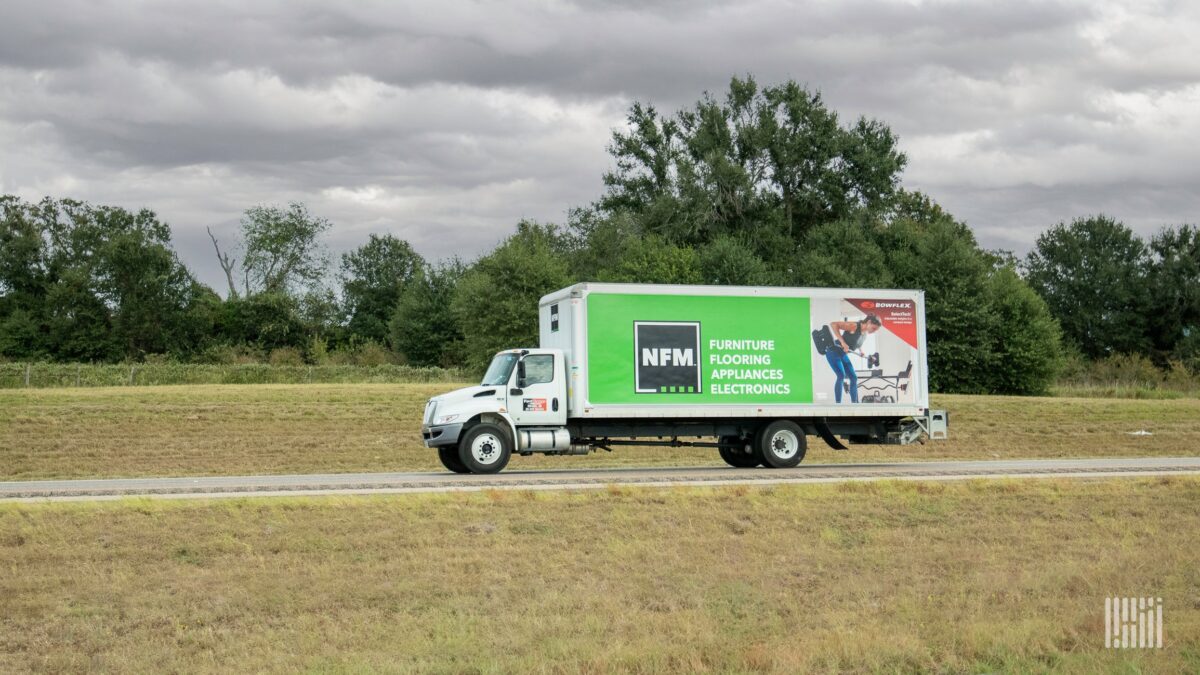The views expressed here are solely those of the author and do not necessarily represent the views of FreightWaves or its affiliates.
November saw the largest ever Black Friday sale, exposing the psychological mind frame of consumers. Adobe Analytics reported a record $9.8 billion in Black Friday online sales, up 7.5% from 2022, not accounting for inflation. And for Cyber Monday, the numbers were even stronger with consumers spending $12.4 billion, a 9.6% increase from 2022. It is a positive sign for the health of the retail industry because most retailers make the bulk of their profits for the year during the holiday shopping season.
Within retail, the demand for big and bulky items is experiencing a notable surge, and this trend is reshaping the dynamics of the industry. Once considered a logistical challenge, retailers are now embracing the unique opportunities presented by oversized products, recognizing their potential for increased revenue and improved customer satisfaction.
The rise of e-commerce has been a catalyst for the prominence of big and bulky in retail. Consumers increasingly prefer the convenience of shopping online, including for large items like furniture, appliances and home fitness equipment. Retailers are adapting by optimizing their last-mile logistics to accommodate the delivery of oversized products directly to consumers’ doorsteps. Innovations in last-mile delivery management solutions like FarEye and last-mile networks like Frayt, combined with partnerships with specialized carriers like PickUp, are helping retailers overcome the challenges associated with transporting and delivering large items.
As consumers seek more personalized and unique shopping experiences, retailers are expanding their product offerings to include a diverse range of big and bulky items. This shift is evident in sectors such as home furnishings, fitness equipment and outdoor living products. The ability to provide an extensive selection of large items allows retailers to attract a broader customer base and cater to varied preferences, contributing to increased sales opportunities.
Recognizing that delivering big and bulky items requires a more personalized approach, retailers are offering flexible delivery options. Logistics platforms like FarEye offer route optimization, appointment scheduling, white-glove delivery services and the ability for customers to choose specific time windows for delivery. Providing customers with control over the delivery process enhances the overall shopping experience and fosters customer loyalty.
But it isn’t all good news. Holiday spending data, no matter how good or bad, doesn’t represent the state of the entire U.S. economy. We expect a fairly modest growth of 1% to 3% in 2024. As retailers are competing for that growth, it makes having the right technology to improve the customer experience while making the fulfillment processes more efficient so much more important.
Technology plays a crucial role in enhancing the customer experience for big and bulky retail. augmented reality and virtual reality technologies allow consumers to visualize how oversized items will fit into their living spaces before making a purchase. This not only reduces the likelihood of returns but also adds a layer of convenience and confidence to the online shopping experience for large products. Newer last-mile delivery management solutions allow retailers to handle the complex fulfillment of big and bulky. Solutions offered by companies like FarEye can handle these complexities by providing advanced optimization while also considering returns and even looking into sustainability.
The environmental impact of packaging and shipping large items is a growing concern for both retailers and consumers. To address this, the retail industry is embracing sustainable packaging practices and eco-friendly shipping options. Retailers are exploring innovative packaging materials that are both protective and environmentally responsible. Additionally, the optimization of delivery routes and the use of electric or hybrid delivery vehicles contribute to more sustainable big and bulky retail operations.
Supply chain visibility is a critical aspect of managing big and bulky items effectively. Retailers are investing in advanced technologies such as radio frequency identification tracking, GPS systems and real-time analytics to monitor the movement of oversized products throughout the supply chain. Collaborative platforms that connect retailers, manufacturers and logistics providers are becoming increasingly popular, facilitating seamless communication and coordination to ensure timely and accurate deliveries.
The trends surrounding big and bulky items in retail underscore a shift in consumer preferences and the industry’s commitment to meeting evolving demands. The importance of optimizing logistics, embracing technology and implementing sustainable practices cannot be overstated. As retailers continue to adapt to these trends, the big and bulky category is poised to become a strategic growth area, offering new possibilities for revenue generation and customer satisfaction in the dynamic world of retail.
Look for more articles from me every Friday on FreightWaves.com.
About the author

Bart De Muynck is an industry thought leader with over 30 years of supply chain and logistics experience. He has worked for major international companies, including EY, GE Capital, Penske Logistics and PepsiCo, as well as several tech companies. He also spent eight years as a vice president of research at Gartner and, most recently, served as chief industry officer at project44. He is a member of the Forbes Technology Council and CSCMP’s Executive Inner Circle.










